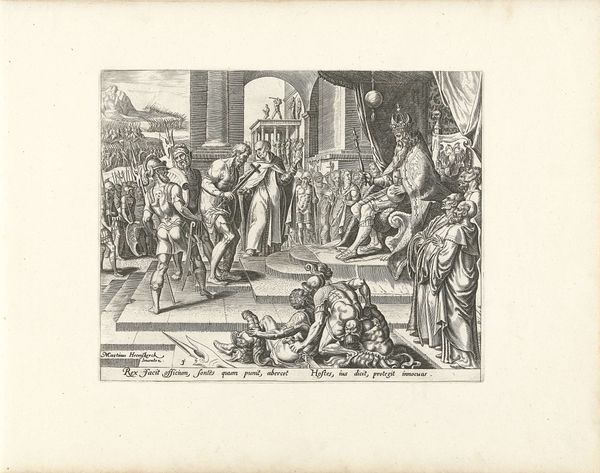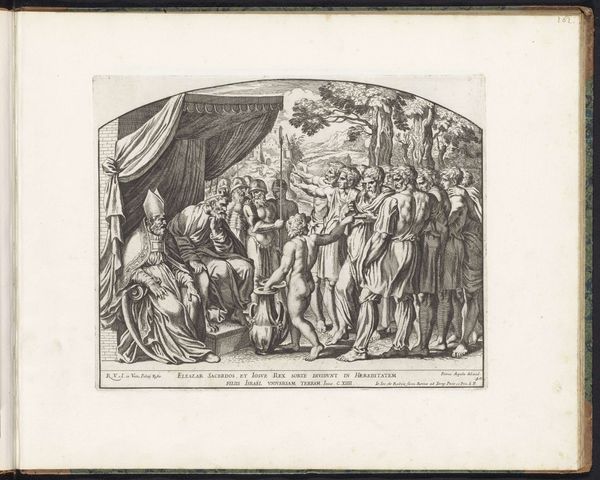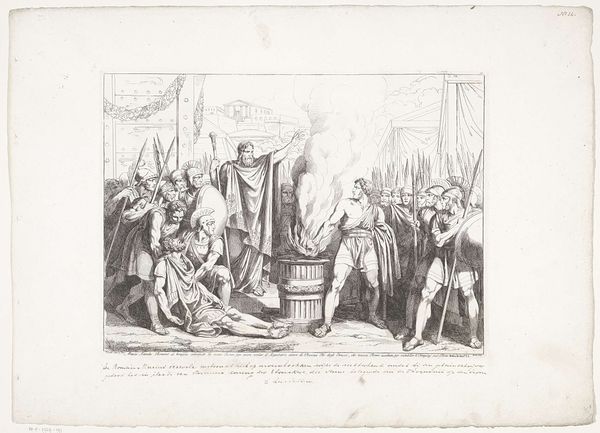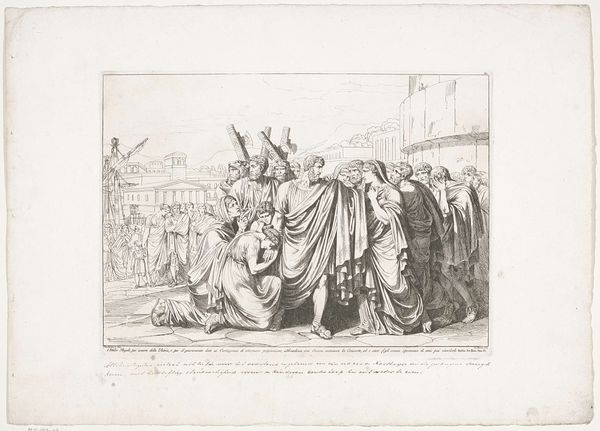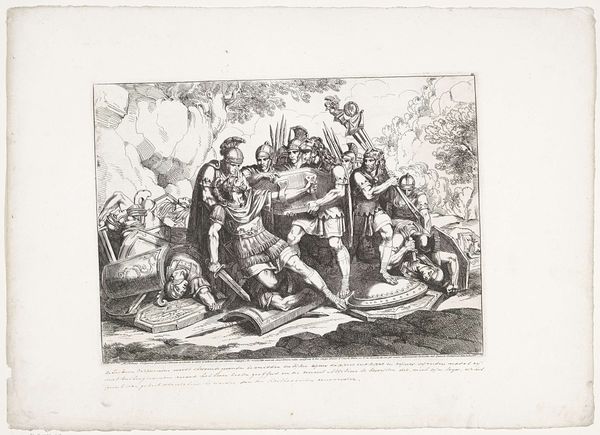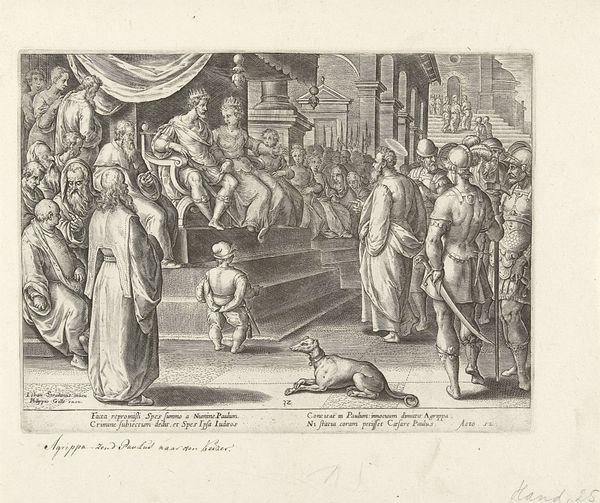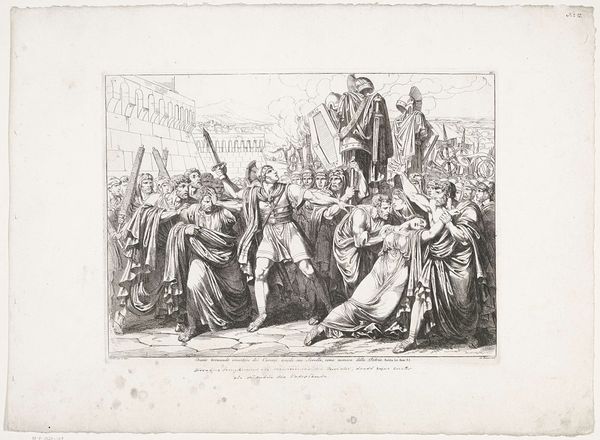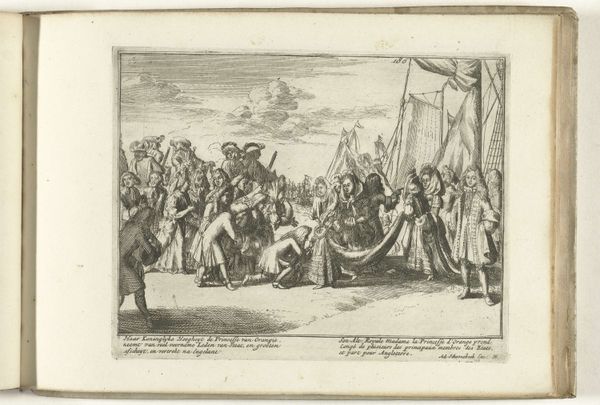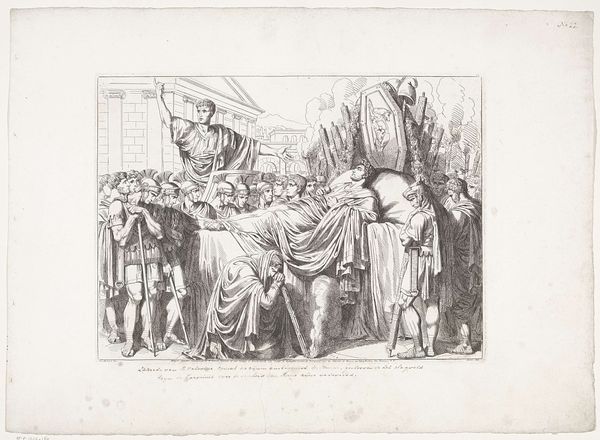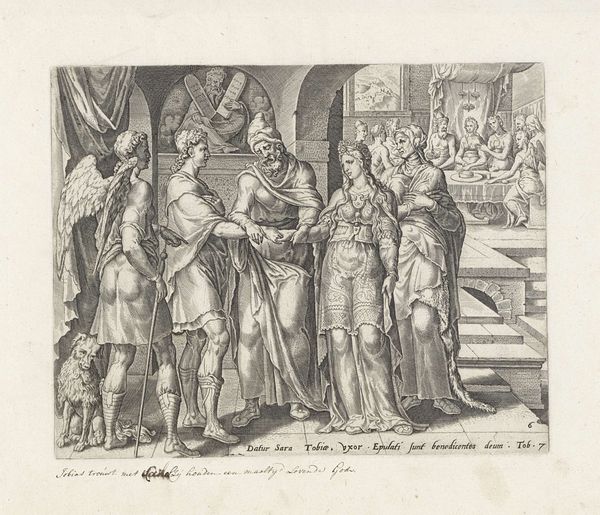
print, etching, engraving
#
neoclacissism
# print
#
etching
#
old engraving style
#
figuration
#
line
#
pen work
#
history-painting
#
engraving
Dimensions: height 315 mm, width 426 mm
Copyright: Rijks Museum: Open Domain
Curator: This somber intaglio print by Bartolomeo Pinelli, created around 1818, is titled "Consul Titus Manlius Torquatus laat zijn zoon onthoofden" depicting the execution of Titus Manlius' son. Editor: The mood is immediately oppressive; the gray scale enhances a sense of solemn austerity. I'm struck by the overwhelming gloom cast over the scene. Curator: Indeed. Notice how the composition uses line and perspective to guide the viewer’s eye. The receding lines of the tents and the figures create a sense of depth. The arrangement of the bodies is clearly meant to emphasize the consul seated in judgement, as well as the grisly execution scene. The cross-hatching generates tonal variety without diluting the starkness of the event. Editor: It’s fascinating how Pinelli weaves layers of historical and cultural significance into this image. We can explore themes of justice, paternal duty, and state before family. Torquatus represents law and order; yet his suffering is also represented, in both stance and placement atop a funereal monument. There are so many historical paintings around at this time, where the focus on the emotional cost to a stoic hero is really starting to solidify as a powerful approach. Curator: Certainly, there is that clear juxtaposition. Consider how the print’s aesthetic relates to Neoclassicism, reviving classical antiquity in a time of enormous sociopolitical upheaval. There's a striving for moral instruction through visual experience—a very common ambition for the epoch. The careful arrangement is central. Editor: What resonates most with me is the tragic weight of these classical themes – honor, sacrifice. These ideas would be powerfully internalized during Pinelli's time. We should reflect that the 'consul' theme in art continues to spark moral quandaries to our present. Curator: I agree, these stark lines invite a stark assessment. It's a powerful etching that lingers with questions long after viewing. Editor: Absolutely, it speaks to our understanding of history, leadership, and the terrible burdens of power.
Comments
No comments
Be the first to comment and join the conversation on the ultimate creative platform.

